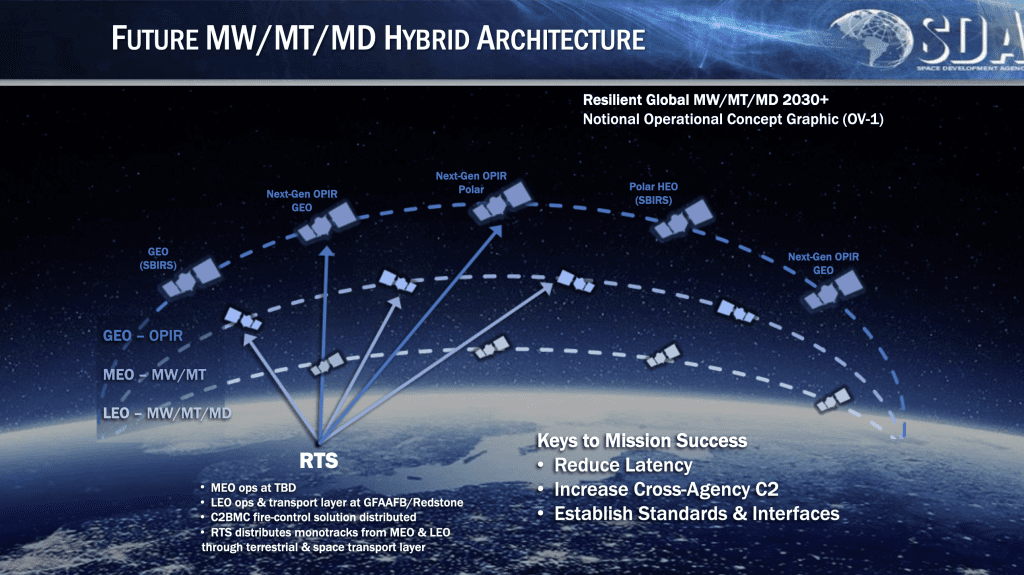The Space Development Agency’s network of sensing satellites in low Earth orbit, also known as Tracking Layer Tranche 1, will not have the originally planned seven Raytheon Technologies satellites.
An agency spokesperson stated that SDA is reviewing and reevaluating Raytheon’s work for Tranche 1 Tracking Layer in response to queries from SpaceNews.
The spokesperson mentioned that the agency cannot discuss the specific reasons why Raytheon will not be delivering the seven satellites as per the $250 million contract awarded by SDA in March 2023.
The Tracking Layer Tranche 1 is the initial phase of a plan to create a global system for warning and tracking missiles. In July 2022, SDA ordered 14 satellites from Northrop Grumman and 14 from L3Harris Technologies.
Raytheon was among the bidders who did not make the initial selection. However, SDA later decided to include seven Raytheon satellites as the fifth group of the constellation after Congress increased the agency’s 2023 budget by $250 million specifically for the purpose of funding missile-tracking satellites. The $250 million contract also covers ground operations and support services.
During the Satellite 2024 conference on March 18, SDA Director Derek Tournear stated that the agency expects to have 28 wide field-of-view missile tracking satellites in operation in orbit by late 2025, and he did not mention the other seven.
The SDA spokesperson indicated that removing these seven satellites should not significantly affect the performance of the missile-tracking network.
‘Minimum viable product’
SDA stated that for Tranche 1 Tracking, the minimum viable product is 28 missile warning/missile tracking space vehicles that provide the minimum viable capability of regionally persistent warning and tracking of missile threats, including advanced threats like hypersonic glide vehicles.
In addition, the Tracking Layer will be supplemented with other missile-tracking satellites in low Earth orbit from the Missile Defense Agency and other spacecraft in medium Earth orbit being developed by the Space Systems Command, the agency said.
The spokesperson said, "SDA’s work in this area is part of a collaborative approach that includes the MEO missile warning/missile tracking efforts underway at SSC and the integrated data and ground efforts of the Missile Defense Agency. ‘We will deliver our minimum viable capability, and we are not going it alone. It is part of a larger, more robust multi-orbit missile defense network designed to address current and future threats.’"
It is currently unclear what the new scope of Raytheon’s contract will be.
According to industry sources, the issue seems to lie in the $250 million fixed-price contract, which would put Raytheon at risk of having to absorb higher than expected overruns due to increased costs.
In a statement, Raytheon’s parent company RTX mentioned that it is "committed to supporting SDA on current and future programs to provide key capabilities to support the warfighter." The company did not specifically address the reasons why the Tranche 1 contract with Raytheon is being reconsidered.
Tournear has stated purchases of SDA satellite portions are appropriate for fixed-price agreements because the agency acquires developed technologies from the commercial market that do not need risky development work. The agency has distinct programs for experimental satellites.









